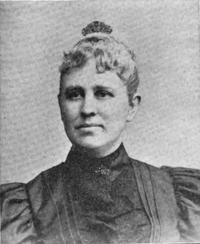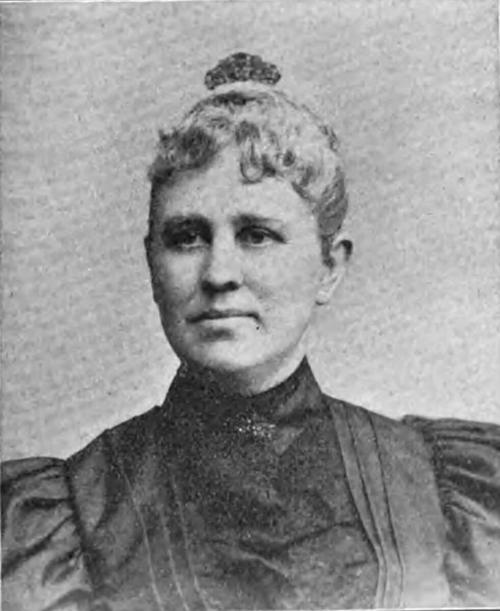Army wife Mary Adams spent several years in Arizona. She recorded her time at Fort Bowie, leaving an indelible record of a narrow escape she endured as she departed the territory in 1871.
Mary Wildman was born in 1844 in Clarksfield, Ohio. In December 1867, at age 23, she married 2nd Lieutenant John Quincy Adams who had distinguished himself during the Civil War and was on his way to Arizona’s Fort Bowie with the 1st U.S. Cavalry.
Established in 1862 to protect travelers coming through Apache Pass, Fort Bowie was rebuilt in 1868 on a more level 10-acre plot of land. Indian attacks were prevalent over the ensuing years as the Apache warrior Cochise raided nearby settlements, outlying farms and ranches. The 1st Cavalry was needed to reinforce the garrison and troops engaged the Apaches on numerous occasions over the next few years.
Mary and John remained at the fort until 1871 when the 1st Cavalry received orders to report to Oregon. By then, Mary had given birth to a daughter, Marietta, born at Bowie in August 1869.
In February of ‘71, the entourage headed out of the fort, their destination over 350 miles away along the banks of the Colorado River and Fort Yuma before continuing on to San Diego and up the coast to Oregon. They would travel over a desert that offered little shade, scant water and unknown dangers.
Capt. Reuben F. Bernard, commander of the 1st Cavalry, along with his wife, Alice, and 4-year-old son, Harry, accompanied Mary, John, and little Marietta.
“Six mounted and armed soldiers, our escort, were close behind the ambulance,” Mary wrote as the company headed out. “At a little distance four army wagons, containing baggage and two or three discharged soldiers, with the driver, brought up the rear.”
“Our minds were filled with pleasant anticipations as we waved a merry good-bye to friends gathered to bid us Godspeed,” she wrote.
“After the first long, weary day’s ride and we were gathered around the camp-fire, our joy had not diminished, for Arizona was a good place to emigrate from in those days. Happy talk and laughter passed the time, till we were admonished by the lateness of the hour that we must separate for the night. We went to our cozy tents for sleep and rest preparatory for the morrow’s long ride. We did not dream how hard and full of peril it would be!”
“The early morning found us with refreshed minds and bodies and we again started in the same order of march, with song and jest. The morning hours were fast passing, when we were suddenly startled into silence by the sound of shouts and of firearms in the direction of the wagons. We could see nothing, for they were hidden from view by a slight bend in the road. We breathed again when some one said, ‘It is only the men firing at coyotes.’”
“But the relief was only momentary. A soldier came running to us exclaiming, ‘The Indians are surrounding us!’”
“While speaking, he was endeavoring to extract an Indian arrow which had pierced his shoulder,” Mary wrote.
“Mrs. B (Alice Frank Bernard, Captain Bernard’s wife) and I bound the poor fellow’s bleeding wound as well as possible with the meager materials at hand, and making a pillow of shawls and wraps we laid him upon the bottom of the ambulance. Before this was accomplished other men came and reported the rest of their comrades killed.”
“But our danger was not yet over. Several miles farther on, at the foot of the Pecacho mountain (probably Picacho Peak, about 25 miles north of Tucson), was a narrow pass. Our hearts stood still when we realized the possibility that the Indians, mounting the mules they had taken from the wagons and riding through a short-cut, might intercept us at this pass.”
She continued in her writing, “We hastily prepared to start. Lieutenant R (Captain Gerald Russell of the 3rd U.S. Cavalry who was also stationed at Fort Bowie) and my husband still took the lead, but now the soldiers were distributed about the ambulance, two at each side and two at the back, each soldier with one of the men from the wagons on the horse behind him, and in the ambulance the fainting, dying soldier at our feet. Thus we began our mad race for life.”
“How the ambulance swayed and rocked, as the driver urged the horses into a gallop! And how bloodless was every man’s face as he leaned forward in his saddle, with revolver ready in hand, peering behind each rock and bush for a hidden foe! The brave, steady eyes assured us that every one of them would die to defend the women and children.”
“Only God heard the agonizing prayers uttered as we sped along that dreary Arizona road — prayers for deliverance from a horrible death, or if captured, from a more horrible life.”
“As we neared the pass, every eye was strained to catch sight of the dreaded forms; but we passed on and into the open plains unmolested, and our peril was over.”
“That night our little company, gathered around the fire in the stage station, was very quiet. I thought sorrowfully of the three brave men whose bodies lay out in the moonlight, alone and uncared-for; but my heart also overflowed with a joy too solemn for words; for, though we had lost every worldly possession except the clothing we wore, what cared I for such loss! Was not my husband sitting there beside me? And was not a dear little sunny-haired baby sleeping peacefully upon my bosom?” Mary wrote.
Mary looked forward to a more peaceful post in Oregon where she gave birth to another daughter, Charlotte. In 1875, son Harry was born but only lived a few years.
After John retired from the Army in 1896, he and Mary spent their final days in Norwalk, Ohio.
Mary died April 12, 1917, at age 73. She will be remembered for her frank and vivid description of a harrowing ride across the Arizona desert.
Jan Cleere is the author of several historical nonfiction books about the early people of the Southwest. Email her at Jan@JanCleere.com.
Website: www.JanCleere.com.
Sources:
Adams, Mary W. “An Arizona Adventure.” The Midland Monthly, Vol. 1 (January-June 1894). Des Moines: Johnson Brigham, Publisher.
Altshuler, Constance Wynn. Chains of Command: Arizona and the Army, 1856-1875. Tucson: Arizona Historical Society, 1981.
Cozzens, Peter, ed. Eyewitness to the Indian Wars 1865-1890: The Struggle for Apacheria, Volume 1. Mechanicsburg, PA: Stackpole Books, 2001.
“Honored Resident Called by Death.” Norwalk Reflector-Herald. November 12, 1917.





